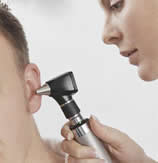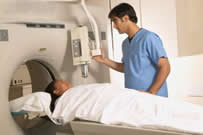
On the site introduction what is it? main symptoms more symptoms diagnosis treatment self help my story my diary driving A-Z disability hereditary burn out salt Prosper Meniere famous people staying positive stress feedback search |
DiagnosisIntroduction IntroductionMeniere's is very difficult to diagnose because the actual cause is unknown. A diagnosis of Meniere's is usually only given if you suffer from all of the classic symptoms and only once everything else has been eliminated. Yet, to be a sufferer you do not actually have to have all symptoms present as there can be different type of the disease and not all tests will confirm damage early on in the disease. There is no blood or other test that will show Meniere's as positive. Many sufferers take years before an actual diagnosis is made. Many sufferers have at one stage been told that there is nothing wrong with them, or that it is all in their imagination. I was told that I was suffering from psychosomatic symptoms and that they would all disappear - which of course they never did! For some Meniere's disease seems to run in their families, although no hereditary gene has been discovered at the time of writing. AudiometryIf you are referred to the ENT department, prior to the appointment it is likely that the first test will be on your hearing. You will sit in a booth or quiet room with a pair of headphones on and an Audiologist will test your range of hearing in each ear, by measuring your response to the tones and pitches heard - basically you press a button when you hear the tones and release when not. A graph called an audiogram will be drawn up to show the results. Every time thereafter you will have the same test in order to measure any changes. In Meniere's it is often low pitch tones that are not heard and this will show up in these tests so long as the disease has started to progress. Early stages of the disease may not show any significant hearing loss. TympanometryAnother test that looks at your ear drum and detects any fluid behind it. A probe is placed in your ear a quick burst of pressure , and the response monitored. more info.
Electrocochleography (ECOG) and electronystagmography (ENG) Caloric TestECOG. A fine needle attached to a recording wire is passed into the affected ear, the needle comes very close to the cochlea hair cells. Activity is recorded in response to a series of clicks. Abnormalities are shown in later stages of Meniere's rather than very early on. more info ENG / Caloric tests. This test measure any involuntary eye responses which can occur as a result of ear nerve damage . Electrodes are fixed around the eyes, then warm and cold water is injected into the ears to measure the various responses. This is called bithermal caloric testing. This test will show the nerve damage by comparing responses from the water on either side - in normal ears each side responds with the same rapid side to side eye movements (nystagmus). When one side is damaged, the nystagmus / eye movements will differ, proving the damage. An alternative to the caloric testwith water is to use cool and warm air to heat up/cool the inner ear so the responses can be measured in a similar way to the water caloric. This is called Air bithermal caloric testing and is not usually the preferred method over the water caloric, but if grommet/s are fitted this test can be carried out with measurable results. If a grommet exists on one side, then the water caloric will show differences due to the grommet so this test would not give accurate results. Rotational Tests A chair which rotates you and measure your eye response in the same way that the ENG/Caloric Test work. more info This web site has been written and developed by Alex Tye - "MrLexy" on the internet! |
||

